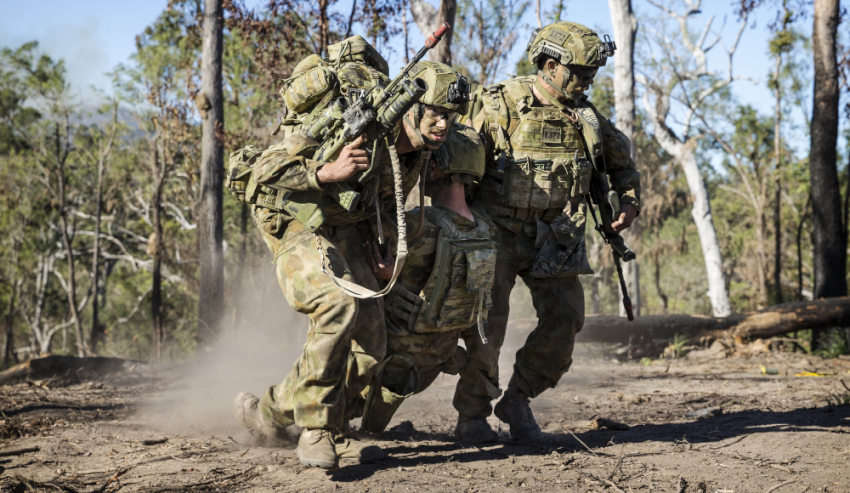The citizen-soldier, once the bedrock of the Australian Army, has given way to the highly professionalised force we have today. However, we can use the ideas of Morris Janowitz to restore the utility of the current reserve and address some of the occupational challenges Army will face in the future, explains Australian Army officer Cate Carter.
To continue reading the rest of this article, please log in.
Create free account to get unlimited news articles and more!
Morris Janowitz, a contemporary of Samuel Huntington, established the Inter-University Seminar on Armed Forces and Society (IUS), which remains the leading conference in the multidisciplinary field of civil-military relations today.
Unlike Huntington, who saw the key to appropriate civil-military relations as professionalism of the military (in other words, keeping its distance from civil control), Janowitz saw the solution through closer ties between the military and society. This is called Convergence Theory, which essentially describes the way in which the military becomes civilianised and society becomes militarised – in other words, more like each other. The product of this convergence is the “citizen-soldier”.
The citizen-soldier model has its roots in the classical idea of “civic virtue”, which is demonstrated by active participation of the citizen in public life – the very essence of the republic! Military service is just one part of that public life, as is participation in elections, voluntary association and paying taxes.
Janowitz observed the growing demand for civil rights and proposed that the citizen should balance civil rights with civil responsibilities and even extend those responsibilities beyond national boarders to the welfare of humanity. The citizen-soldier is a good example of civic obligation, and it is not surprising that it is the traditional model of many armies, including the Australian Army.
The historical Australian soldiers were amateurs – temporarily engaged and rapidly trained. However, their tasks were, and still are, expeditionary – remote and largely unseen by the citizens they represent. Under the historical model, Australian military operations made a broader contribution to humanity perhaps, but not the domestic res publica as Janowitz may have preferred.
However, since Vietnam, the Australian professional soldier has gradually moved away from the historical citizen-soldier model and has arguably diverged, rather than converged, with society. However, the Army does, in part, represent another of Janowitz’ ideas – the “constabulary force”.
In an epilogue to The Professional Soldier, Janowitz describes an alternate role for the military as “a constabulary force when it is continuously prepared to act, committed to the minimum use of force, and seeks viable international relations rather than victory”.
The strategic context is what’s important here. Remember that in a short time after the conventional Second World War, the spectrum of conflict had exploded out to encompass new United Nations peacekeeping missions at one end and a nuclear arms race at the other.
The conventional force was not going to cut it in this new rapidly changing, technologically complex, geopolitical order that was the 1950s. Wait… sound familiar? These are precisely the terms we use to describe the threat environment today.
Because of this complex environment, and newly downsized Western armies, roles like the “constabulary” one are back in debate. But how do they relate to force structure? Janowitz imagined a constabulary force as more of a role than a structure. However, last week we saw the British Army combine both these ideas (role and structure) in a restructure that would assign different roles to the three Divisions of the Field Army.
One Division was assigned to War Fighting, one to Humanitarian Assistance/Disaster Relief/International Engagement, and one to Intelligence/Cyber Warfare/Information Operations. This represents a specialist approach to force structure, which is the opposite of the way the Australian Army has approached the multi-role combat brigades in the First Division.
It would appear almost impossible to return to a functional model with the three full-time Australian brigades – there just isn’t enough strength to sustain a rotational operational tempo. But there is latitude to perform the constabulary role and embody the citizen-soldier model – in the Second Division, which is made up of part-time military professionals. Specialists are found in civil society.
The full-time members of the Army specialise to a certain point but only within a longer career as a generalist. The military organisation comes first, and the specialisation comes second. In the civil sector, the opposite of this is true. Specialist professionals enhance their skills by applying them to different organisations, and as a result, their professional development is more likely to become more focused throughout their careers, rendering them highly skilled and employable.
Full-time military members, on the other hand, are likely to become more and more generalised as their career progresses, even to the point where they perceive they are “too generalised” to compete in the civil sector.
It may be that part-time Australian citizen-soldiers, as specialised as they may be, have previously taken too long to prepare for war, resulting in several experimental readiness models being tested during the last decade.
This does not meet Janowitz’ requirement for the military establishment to be “continuously prepared to act”, nor does it guarantee the military will represent current societal values. But perhaps assigning a constabulary role or a highly specialised capability such as Intelligence/Cyber Warfare/Information Operations to an augmented Second Division would start to realise some of Janowitz’ vision.
Cate Carter is the managing editor of the Australian Army Journal. She has a master’s degree in international relations from the University of Queensland and is a PhD candidate in the field of armed forces and society at Deakin University.
The views expressed in this article and subsequent comments are those of the author(s) and do not necessarily reflect the official policy or position of the Australian Army, the Department of Defence or the Australian government.

 Login
Login







